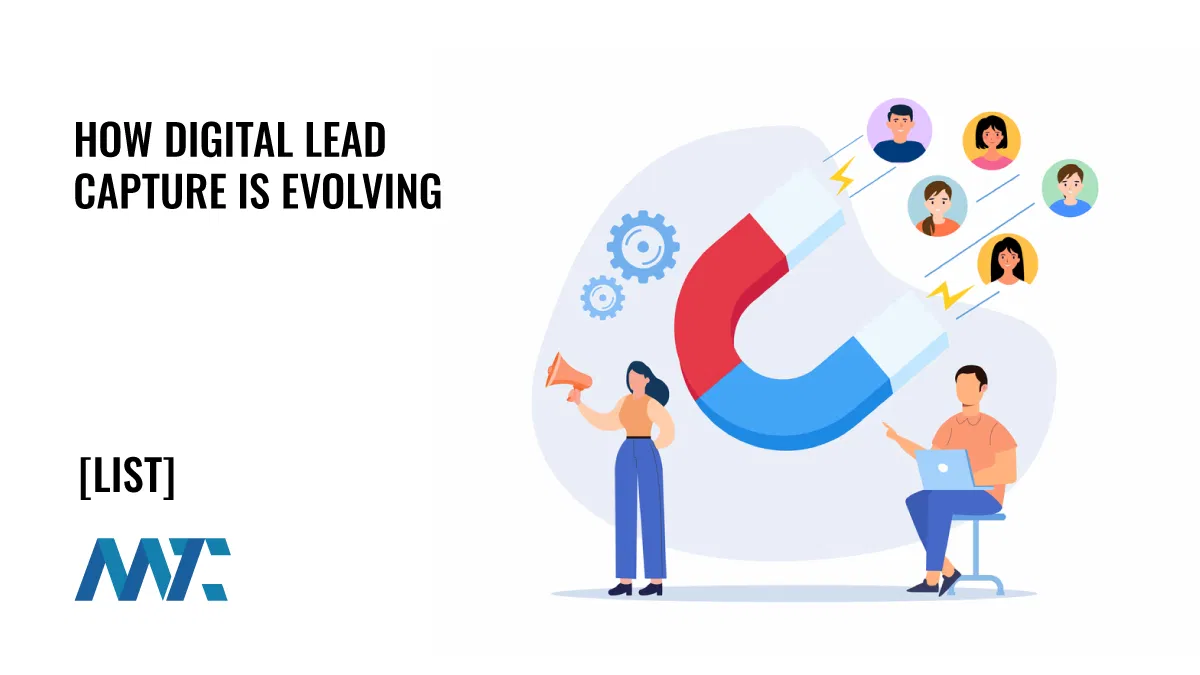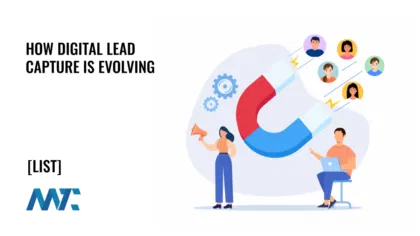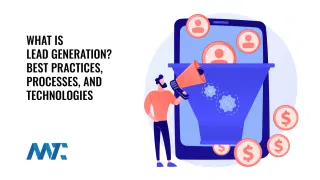

Digital lead capture has undergone a dramatic transformation in recent years. Once upon a time, a marketer’s entire playbook revolved around a single page: the web form. Visitors who wanted a white paper, demo, or quote would fill in their name, email, and company details. Those willing to raise their hand became the leads that sales teams pursued.
But the modern buyer no longer behaves that way. People browse anonymously, skip forms, and expect instant, personalized interactions. Meanwhile, technology has multiplied the number of ways businesses can identify, qualify, and engage potential customers. From social logins and chatbots to QR codes, SMS opt-ins, and AI-based intent scoring, marketers now operate in a world where nearly every touchpoint can become a lead capture opportunity.
This evolution has redefined not just how leads are collected, but also how privacy, consent, and trust must be managed. Below is an overview of the most common and emerging approaches shaping digital lead capture today.
Legacy Web Forms: The “Raise Your Hand” Method
84% of marketers use the form submission method to generate leads.
WPForms
For many years, the web form was the foundation of digital lead capture. Visitors filled out a Contact Us, Request Demo, or Download form, offering their details in exchange for value. This remains the most straightforward and most transparent LeadGen mechanism because the visitor consciously provides their data.
Forms still dominate because they offer explicit consent and straightforward compliance. Yet they are also prone to friction and incomplete submissions. To adapt, marketers are simplifying forms, shortening fields, and clearly explaining data use. While forms remain privacy-friendly, today’s challenge is making them faster, clearer, and more user-centric.
Social Logins and Single Sign-On (SSO)
77% of people believe social login is a good registration solution.
Janrain Survey
SSO allows visitors to register or fill out forms using existing credentials from Google, Microsoft, LinkedIn, or Facebook. This reduces friction, improves accuracy, and often provides richer profile data. In B2B marketing, SSO through Google or LinkedIn is increasingly common for webinars and gated content.
Social login uses an OAuth consent screen, so users see exactly what information is being shared. Marketers should request only what is necessary and assure users that no hidden social actions will occur. When implemented transparently, SSO delivers higher conversions while maintaining strong user trust.
Conversational Lead Capture
One-third of businesses (33%) are using live chat to generate leads.
DemandSage
Chatbots and live chat tools are replacing static forms with real-time interaction. Visitors can ask questions, get immediate responses, and share their contact details during conversation. This method increases engagement, especially for complex products or services that benefit from personal dialogue.
To protect privacy, chatbots must explicitly request consent before recording information. When chat feels conversational rather than transactional, it not only generates leads but also enhances customer experience and brand perception.
SMS and Text-Message Opt-Ins
Text message open rates reach up to 98%.
Mobile Marketing Watch
SMS lead capture invites prospects to opt in by texting a keyword or providing their phone number for updates, offers, or reminders. Text messaging is one of the most direct, high-engagement channels available today, with near-instant read rates.
However, it’s also heavily regulated. The TCPA requires explicit consent, and messages must include clear opt-out instructions. Because text communication feels personal, marketers must handle it with restraint and transparency to maintain trust.
QR Codes Connect Offline and Online
The marketing and advertising industry saw a 323% jump in QR code scans in 2023.
QRCodeChimp
QR codes have become the bridge between physical and digital engagement. Scanning a code from packaging, signage, or print material takes users directly to a mobile-optimized page, chatbot, or form. More than two-thirds of consumers have scanned a QR code within the past year, making it a widely accepted tool.
The best QR campaigns make intent clear. A brief instruction (Scan to get your quote) establishes transparency and builds trust. Since the scan itself is user-initiated, this approach aligns well with consent-based marketing.
Contests and Giveaways
Contest-related emails average a 45% open rate and 5.5% conversion.
Opinion Stage
Giveaways and sweepstakes attract large audiences quickly by exchanging an incentive for personal information. While they can generate thousands of new contacts, lead quality varies. The most effective contests offer prizes relevant to the product or service, helping filter serious prospects from casual entrants.
Transparency is essential. Contest rules should explain how data will be used and whether it will be shared with partners. When paired with clear opt-in options, contests can boost engagement without compromising trust.
Gated Content and Landing Pages
67% of marketers use content marketing to generate leads.
DemandSage
Gated content—such as white papers, webinars, or calculators—remains a cornerstone of B2B lead capture. Visitors exchange their details for high-value insights or tools. Because the exchange is explicit, both sides benefit: the brand gains data, and the user gains useful information.
To stay compliant, landing pages must clearly state how information will be used. Many marketers now deliver the resource by email to validate the address and provide a lawful opt-in for future communication.
Event and Webinar Registrations
73% of companies use event marketing to generate leads.
BrightTALK
Events, trade shows, and webinars create direct engagement opportunities. Registrants willingly provide data to gain access to education, networking, or brand experiences. These leads are often higher intent and more qualified than general website traffic.
Registration pages must disclose whether attendee data will be shared with sponsors or partners. Respecting that consent builds goodwill and ensures compliance. When managed well, events are among the most effective ways to generate high-value leads.
Partnerships, Affiliates, and Referrals
78% of B2B marketers use referral marketing to generate leads.
DemandSage
Referrals, affiliate programs, and co-marketing partnerships bring trusted leads through existing relationships. They often deliver higher conversion rates because the lead originates from a credible source.
Shared data requires careful handling. Prospects must be informed if their information is being shared or passed along. Clear agreements between partners protect both compliance and customer confidence.
AI, Intent Scoring, and Anonymous Identification
70% of B2B teams use intent data for digital marketing.
Factors.ai
Artificial intelligence (AI) now enables marketers to analyze visitor behavior, infer buying intent, and even identify anonymous website traffic using data enrichment and reverse lookups. These systems can uncover prospects who never filled out a form and prioritize outreach accordingly.
While intent data and predictive analytics improve targeting efficiency, they also raise ethical and legal questions. Regulations like GDPR and CCPA require disclosure, lawful basis for data processing, and the ability for users to opt out. Responsible marketers use these tools to enhance relevance, not to overreach.
The New Reality of Lead Capture
The evolution of digital lead capture reflects a broader shift toward personalization, automation, and ethical data use. Traditional forms remain essential, but modern strategies extend across every channel—from chat and social to SMS and AI.
The most effective marketing ecosystems blend human consent with machine intelligence. Success depends not on how aggressively leads are captured, but on how transparently and respectfully they are earned. In today’s privacy-conscious world, trust is the ultimate lead magnet.







